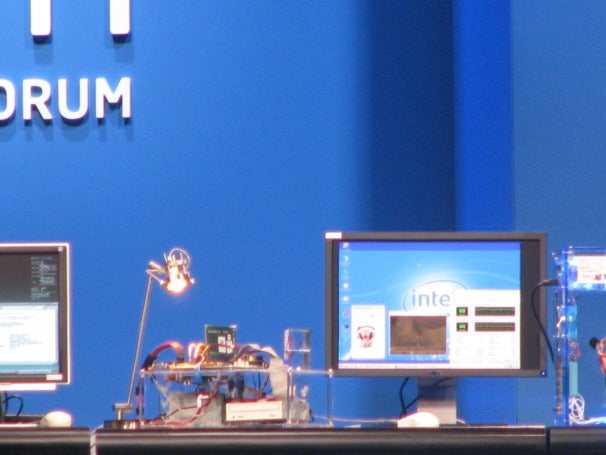(There is CSP solar water splitting and direct solar water splitting, more about that in another article)..
Metals can rust, iron, zinc, aluminium are so desperate to oxidate they wil rip oxygen from water to do so. This has gotten people interested into ways of splitting water, generating hydrogen using metals. This seems to be significant because of the much touted ‘hydrogen economy’, hydrogen being part of our renewable energy mix. There are actually quite some real achievements in the field of solar water splitting, one of the most evolved one coming from the Hydrosol project that ran between 2005 and 2009. We could have several hydrogen facilities and linked electrical plants one may assume, the technology is there..
"The approach resulted in an integrated solar receiver/reactor concept for the exploitation of solar heat that has never before been realized. The first kind of such a pilot-scale reactor was designed, built and is currently operating in a continuous mode at a solar furnace facility, producing hydrogen by cyclic operation exclusively at the expense of solar energy." (source)

(Whatever percentage of solar energy is caught in this proces, with hydrogen cells being 50% efficient, you know you can have that yield in electricity)
The Cost of Hydrogen
The final report claims the aim is to deliver hydrogen at 24 ct/kWh. That is a typical example of carbon/credit thinking. A CSP hydrogen/electricity does not cost money, it produces it. It produces the ability to produce, in bakeries, factories and other places. Therefore it generates it’s own money and maintenance and other cost sould be payable in free market electricity (futures). Only because these projects are set up in a carefully maintained context of cost awareness do we keep thinking of sucess in terms of financial success. This type of succes is easily biased in a financial system based on the ‘petrodollar’ or dollar backed by it’s ability to purchase oil.
Hydrosol 3D
Hydrosol 3 project is under way, it started in 2010 and lasts 3 years. It aims to create a commecial plant of 1MW. One wonders why commercial companies have not picked up this theme yet, it must be lucrative.
"HYDROSOL-3D aims at the preparation of a demonstration of a CO2-free hydrogen production and provision"
The quest for CO2 free Hydrogen seems a bit contrived. This is often seen in research projects, expecially when the industry sets the standards, and the industry wants it perfect because it’s still sucking a carbon tit. Natural gas has CO2 in it, no faul, it burns just as well. I know of no harm done to fuel cells by CO2, so what’s up with that requirement?
Sabatier will rise again
It is in quite interesting to think of H2 and CO2 together, because what are hydrocarbons (our energy dense favorites) made of? H’s and C’s. It is actually not hard to make basic hydrocarbons, as long as you have hydrogen split, which is what plants do in their first photosynthetic steps. Later CO2 is linked to the Hydrogen to make sugars. H’s and C’s are also tied together when Methane is produced, usually on the dark oxygen less bottom of a swamp. Solar hydrogen would not be hurt by some CO2 because there is a process that allows H+ and CO to be combined into Methane (natural gas) called the Sabatier reaction.
CO2 + 4H2 → CH4 + 2H2O
What about that, you make solar gas! Fit for an entire distribution chain already in existence. The cheap cathalyst for this process is Nickel, of course you can go for extreme efficiency and lock this technology up for a while. Why not aim for Solar Methane right away? Easier to store than hydrogen! There are even more productive solar driven processes like this one
"we combined the oxygen uptake and release capacity of cerium oxide and facile catalysis at elevated
temperatures to thermochemically dissociate CO 2 and H2O, yielding CO and H2, respectively.
Stable and rapid generation of fuel was demonstrated over 500 cycles" (source)
The Sabatier process is also referred to as the Methanation process, and it both likes CO2 and CO. Both Methane and Methanol can be produced by it. It is so easy (60% efficient) that the process used to scrub the air of CO and CO2 in submarines, and whatever gasses are not converted can simply be recycled until they are. Here’s another use..
"Common applications of this methanation process include scrubbing traces of CO and CO2 from H2 streams used in fuel cells" (source)
Seems Hydrosol’s problems are solved. They can not only use the Sabatier Process with their system to generate Methane and Methanol, but if people insiste they clean the Hydrogen output of CO2 they can do so too..but that easy in the first place if you restrinct the input to be only water? Let’s do this, and let Italy make it’s own gas in it’s (poor) southern regions.

Audi made up a new name for Methane, e-gas, maybe to hide the fact it wants to use methane fuel cells in it’s Audi Q5 HFC? Let’s give the Germans the benefit of the doubt, the e-gas concept is about making methan/LNG/gas with electricity and deserves a separate post and analysis.





